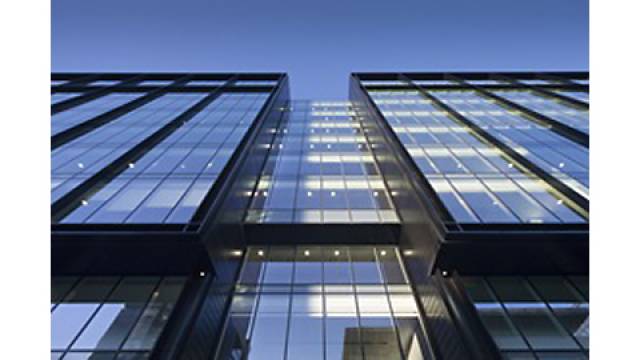
Pilkington products help building win A rate energy certification
The newly completed 122 Waterloo Street development in the centre of Glasgow offers its occupants floor-to-ceiling glazing throughout, with almost uninterrupted views thanks to the latest Schüco curtain-walling system designed, manufactured and installed by Edinburgh-based façade specialist Charles Henshaw & Sons Ltd.
But, impressively, the landmark building – which will be the Glasgow headquarters of global financial services firm Morgan Stanley – will also be one of the most energy efficient buildings in Scotland, thanks in part to high-performance glass coatings from Pilkington United Kingdom Limited.
The scheme has been certified BREEAM Excellent and achieved an ‘A’ rated Energy Performance Certificate (EPC), the latter based on a detailed assessment of the building’s energy performance. The glazing helps to minimise this by reducing energy emitted from the building, as well as the heating effect of the sun, both of which can make maintaining a comfortable interior climate more energy-intensive.
A glass for all seasons
The scale of the building and the large area of glass used means that excessive radiation of heat from the building could lead to rapid heat loss during colder conditions, requiring an increase in heating to keep the interior warm.
To mitigate this effect, the glazing features a Pilkington Optitherm™ S1 Plus low-emissivity coating which reflects radiated heat back into the building.
The second issue that can affect buildings where most of the envelo...
But, impressively, the landmark building – which will be the Glasgow headquarters of global financial services firm Morgan Stanley – will also be one of the most energy efficient buildings in Scotland, thanks in part to high-performance glass coatings from Pilkington United Kingdom Limited.
The scheme has been certified BREEAM Excellent and achieved an ‘A’ rated Energy Performance Certificate (EPC), the latter based on a detailed assessment of the building’s energy performance. The glazing helps to minimise this by reducing energy emitted from the building, as well as the heating effect of the sun, both of which can make maintaining a comfortable interior climate more energy-intensive.
A glass for all seasons
The scale of the building and the large area of glass used means that excessive radiation of heat from the building could lead to rapid heat loss during colder conditions, requiring an increase in heating to keep the interior warm.
To mitigate this effect, the glazing features a Pilkington Optitherm™ S1 Plus low-emissivity coating which reflects radiated heat back into the building.
The second issue that can affect buildings where most of the envelo...


 You are not logged in, please sign in to view contact
You are not logged in, please sign in to view contact Info release
Info release Promotion
Promotion Building shop
Building shop Online business
Online business